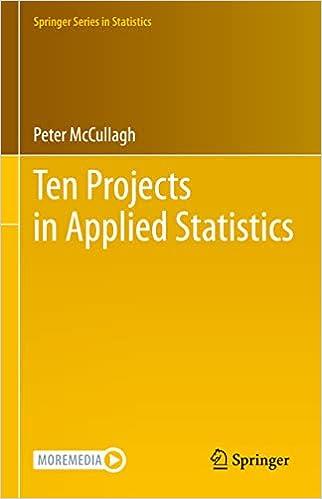Consider a balanced block design having (m) blocks each consisting of (b) observational units, and let (B)
Question:
Consider a balanced block design having \(m\) blocks each consisting of \(b\) observational units, and let \(B\) be the associated block factor as a Boolean matrix of order \(n=m b\). The three-parameter Gaussian model with moments
\[
\mu \in \mathbf{1}_{n}, \quad \Sigma=\sigma^{2}\left(I_{n}+\theta Bight),
\]
is parameterized by two scalars \(\mu, \sigma>0\) and one additional parameter. For the purposes of this exercise \(\theta>-1 / b\) is not necessarily positive, but \(\Sigma\) is positive definite. In addition, the residual refers to any linear transformation, such as \(Y_{i j}-\bar{Y}_{. .}\), whose kernel is \(\mathbf{1} \subset \mathbb{R}^{n}\).
Let \(Y_{i j}\) be the observation for unit \(j\) in block \(i\). Show that the within- and between- quadratic forms
\[
\mathrm{SS}_{W}=\sum_{i j}\left(Y_{i j}-\bar{Y}_{i .}ight)^{2}, \quad \mathrm{SS}_{B}=b \sum_{i}\left(\bar{Y}_{i .}-\bar{Y}_{. .}ight)^{2}
\]
are independent with distributions \(\sigma^{2} \chi_{n-m}^{2}\) and \(\sigma^{2}(1+b \theta) \chi_{m-1}^{2}\) respectively. Hence deduce that, if \(\theta=0\), the mean-square ratio
\[
F=\frac{\mathrm{SS}_{B} /(m-1)}{\mathrm{SS}_{W} /(n-m)}
\]
is distributed according to Fisher's \(F_{m-1, n-m}\) distribution.
Step by Step Answer:






